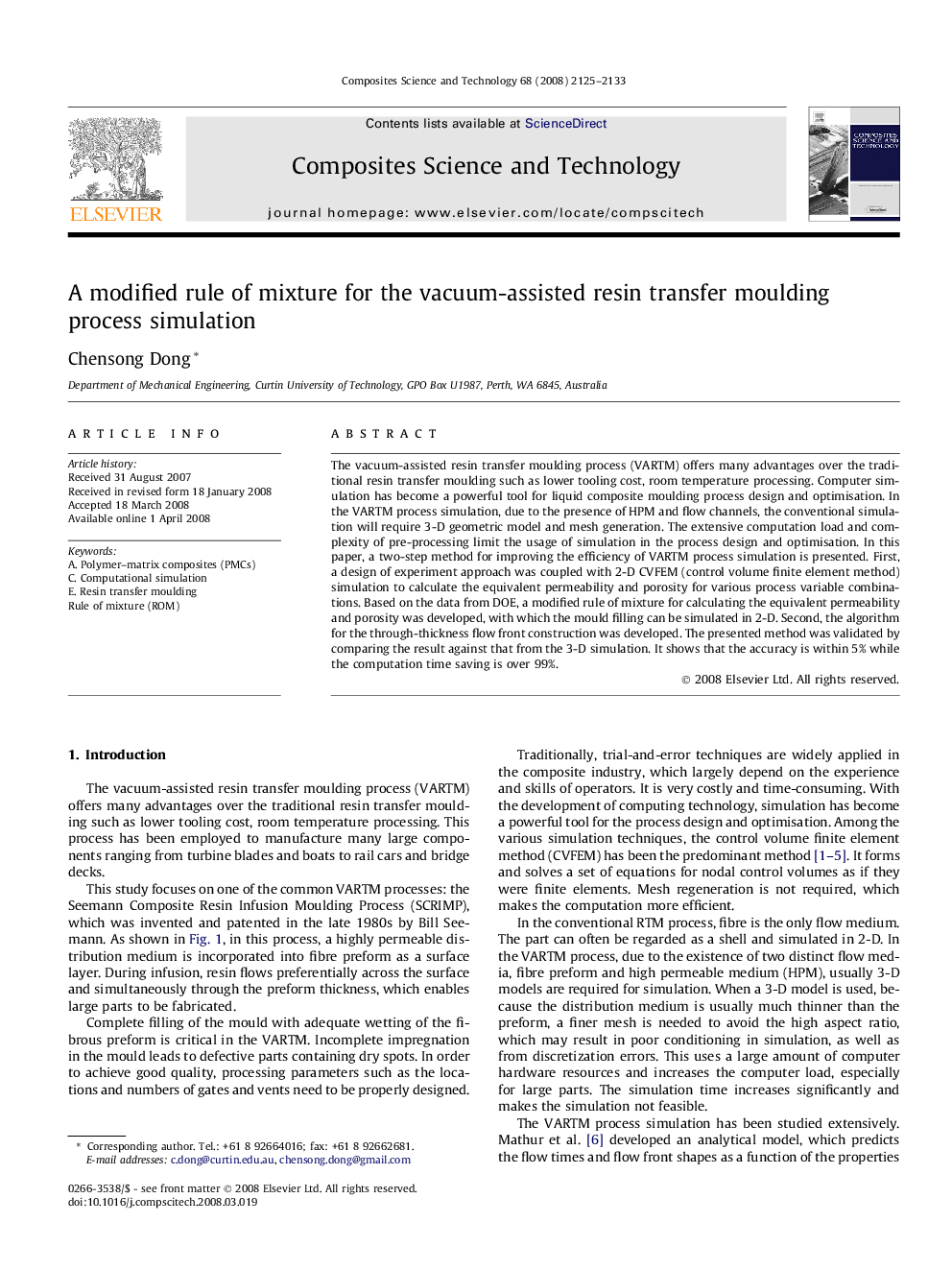| Article ID | Journal | Published Year | Pages | File Type |
|---|---|---|---|---|
| 822469 | Composites Science and Technology | 2008 | 9 Pages |
The vacuum-assisted resin transfer moulding process (VARTM) offers many advantages over the traditional resin transfer moulding such as lower tooling cost, room temperature processing. Computer simulation has become a powerful tool for liquid composite moulding process design and optimisation. In the VARTM process simulation, due to the presence of HPM and flow channels, the conventional simulation will require 3-D geometric model and mesh generation. The extensive computation load and complexity of pre-processing limit the usage of simulation in the process design and optimisation. In this paper, a two-step method for improving the efficiency of VARTM process simulation is presented. First, a design of experiment approach was coupled with 2-D CVFEM (control volume finite element method) simulation to calculate the equivalent permeability and porosity for various process variable combinations. Based on the data from DOE, a modified rule of mixture for calculating the equivalent permeability and porosity was developed, with which the mould filling can be simulated in 2-D. Second, the algorithm for the through-thickness flow front construction was developed. The presented method was validated by comparing the result against that from the 3-D simulation. It shows that the accuracy is within 5% while the computation time saving is over 99%.
